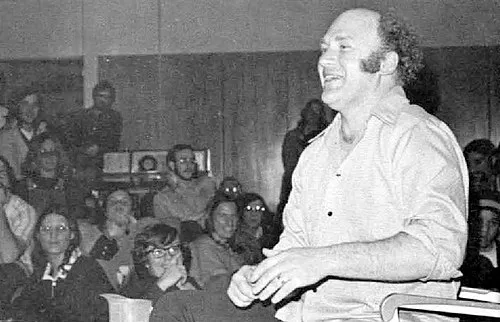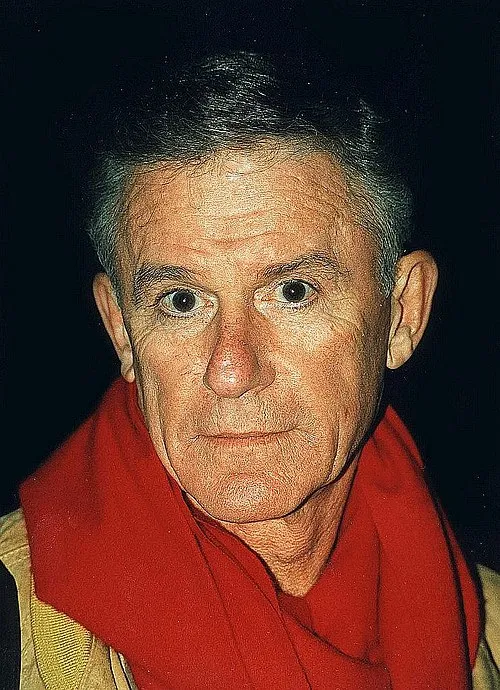
Full Name: Ken Kesey
Nationality: American
Profession: Novelist, Essayist, and Poet
Birth Year: 1935
Death Year: 2001
Notable Works: One Flew Over the Cuckoo's Nest, Sometimes a Great Notion
Literary Movement: Postmodernism
1935 – Ken Kesey, American novelist, essayist, and poet (d. 2001)
In the midst of the Great Depression, when America was grappling with economic turmoil and social unrest, a child was born in a small town nestled in Oregon. Ken Kesey entered the world on September 17, 1935, into a family that would shape his profound understanding of human nature. The youngest of three sons, he spent his early years in the embrace of the rugged Pacific Northwest, an environment that would later infuse his writing with vivid imagery and complex characters.
Growing up, Ken exhibited an insatiable curiosity an unquenchable thirst for knowledge that led him to explore not only literature but also psychology and philosophy. However, it was during his time at the University of Oregon where he began to truly carve out his identity as a writer. He immersed himself in literature classes while simultaneously dabbling in various extracurricular activities participating in wrestling and even acting in plays. Yet it wasn't until he stumbled upon an experimental drug trial at a nearby mental hospital that the true essence of Kesey's literary genius began to emerge.
This experience would become a turning point; it introduced him to LSD and inspired him to delve deeper into human consciousness. Ironically, while many sought refuge from reality through conventional means, Kesey found clarity within chaos a fascinating juxtaposition that would ultimately color his most notable works.
By 1962, after earning his degree and serving as an Army officer during peacetime, Kesey published “One Flew Over the Cuckoo’s Nest,” a novel that not only captured America’s psychiatric practices but also embodied the burgeoning counterculture movement. Perhaps what stands out most about this book is how it deftly blurs lines between sanity and insanity showcasing how societal norms can distort our perception of reality.
The protagonist’s struggle against oppressive authority resonates with readers across generations; who knows how many have identified with Randle McMurphy's fight against Nurse Ratched's regime? His battles were not just physical but deeply psychological a reflection of Kesey's own internal conflicts shaped by societal expectations versus individual freedom.
However, despite its critical success it won awards and secured Kesey’s place within American literature the novel did not make him immune from controversy or legal troubles. Following its publication came fame but also unwanted attention from authorities who viewed him as an emblematic figure promoting psychedelic culture.
As if fated by some cosmic twist of irony, Kesey transformed into both beloved author and misunderstood outlaw almost overnight. The early 1960s ushered in an era marked by revolutionary thought: ideals clashed as traditional values were questioned left and right; yet amidst this fervor stood Ken with long hair flowing down past his shoulders like some sort of modern-day prophet!
Psychedelic Bus Journeys: A Cultural Revolution
In pursuit of adventure and perhaps deeper understanding Kesey embarked on what would become one of pop culture's most enduring symbols: “Further,” a brightly painted bus transformed into rolling art filled with fellow travelers known as "Merry Pranksters." This eclectic band dedicated themselves to exploring altered states through communal living and psychedelic experiences their odyssey chronicled later by Tom Wolfe in “The Electric Kool-Aid Acid Test.”
A Journey Through Time
This bus journey across America became something much greater than mere travel; it represented rebellion against conformity! Ironically though the very freedom they sought often landed them squarely back under scrutiny by law enforcement! Despite their intentions being rooted deeply within love & acceptance Kesey found himself running from police more than once due simply to society labeling him 'dangerous'!
This dichotomy perplexes historians even today... Was he merely exploiting drugs for creativity or genuinely pursuing enlightenment? To understand this question is perhaps essential if one wishes to grasp who Ken really was a paradox wrapped up inside layers upon layers!
The Merry Pranksters became synonymous with psychedelic rock music festivals while spreading their message far & wide about embracing life without limits! They seemed unstoppable until unexpected tragedy struck a sense emerged among them all too familiar… A thin line divided ecstasy from despair!
Cascading Downwards
As years unfolded post-1970s highs faded dramatically leading many including those once partaking alongside Ken either disillusioned or broken apart entirely... Who could’ve predicted? As we reflect now decades later it feels poignant asking whether such brilliance inevitably led straight down spirals steeped deep within addiction-related demise?> > > > >













